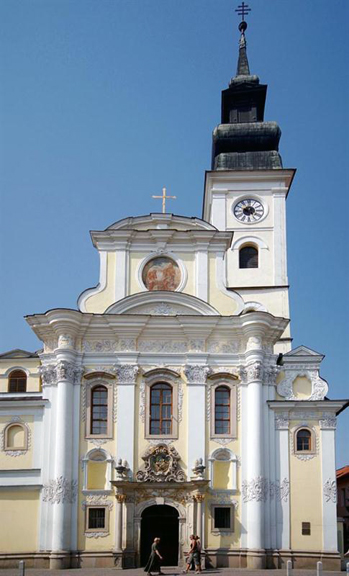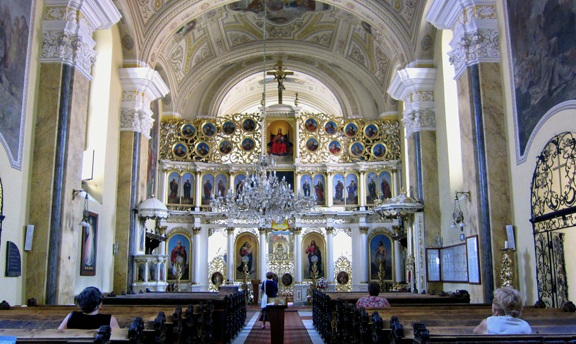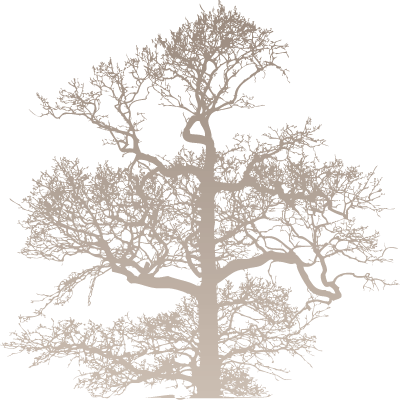
The origin of Saint John’s Greek Catholic Cathedral’s present location begins in the 14th century. In 1429 a hospital/church was constructed dedicated to the Virgin Mary. After the reformation period, this building served as an Evangelical Church. After the reformation, Emperor Leopold I transferred the property to the Roman Catholic Church in 1673 when a Franciscan Monastery was established. During the 18th century the Cathedral underwent an extensive rebuilding project. Presov architect Gaspar Urlespacher was in charge of this work. The exterior was constructed in a rich Baroque style. The interior holds the main altar area and a north and sound side chapel. A third chapel was constructed under the main tower on the north side. The choir loft was expanded while retaining the valuable Gothic vaulted ceiling.
During 1757 four large frescoes of the life of Saint John the Baptist were added. Further additions were then implemented in 1835. During the tenure of the second Greek Catholic Bishop of the Eparchy of Presov, Bishop Joseph Gaganec, in 1846 he employed various artists to paint the murals on the iconostasis and walls. The iconostasis artist was Vienna painter Albert Firkas. George Roman, a sculptor, was also employed for the interior decorations of the walls and ceiling. Other artists who worked on the interior decorations were Joseph Miklossy and Michael Mankovics. Artist Ignatius Roskovics painted the murals above the entrance to the north and side chapels. Artist Nicholas Jordan painted the mural of Simeon Meeting the Christ Child and the mural of Jesus Christ the Sower on the sermon pulpit. Bishop Ganganec also employed medal workers and goldsmiths. He commissioned various liturgical objects for the Cathedral. The goldsmith John Szylassy was commissioned to make crosses and chalice sets. Other artists and book makers were employed to produce a number of gospel and service books. During the tenure of the fourth Greek Catholic Bishop, Bishop John Valyi (1883) Emperor Franz Jozef I personally donated a crosier (Bishops Staff) in recognition of the Cathedral and the Greek Catholic Eparchy. The exterior was painted in light colors and the interior followed the same pattern.

A partial listing of Pastors of Saint John’s Greek Catholic Cathedral from 1851 to 1900 were Vasil Hucko (1851-1858), Michal Starecky (1858-1861), Juraj Soltes (1862-1865), Viktor Ladomersky (1865-1866), Michal Mihalic (1866-1872), Ignac Stempak (1872-1873), Alexander Rojkiovic (1873-1879), Stefan Rojkovic (1879-1887), Bartolomej Sass (1887-1888), Jozef Dzubaj 1888-1890, Kornel Kovalicky 1890-1892, Juraj Repasi (1892-1897), Mikulas Petricko (1897-1897), Bartolomej Sass (1897-1897) and Benedikt Bartolomej Janicky O.S.B.M (1897-1898). Beneath the Cathedral a large crypt was constructed. There are a number of bishops, canons and members of the Roman Catholic Jesuit Order who are interred there. A very valuable holding the faithful are devoted to is a very rare relic of the Shroud of Turin. There are only four copies of this relic in the entire world (Presov, Torino, Jerusalem and Vilnius.) The cathedral also was blessed to have Pope John Paul II visit the cathedral during his 1995 trip to Slovakia. Another valuable holding is a beautiful statue of the Virgin Mary and child Jesus. Today, it is located at a side altar. Both the Virgin Mary and Child Jesus have gold crowns upon their heads with semi-precious stones. Their clothing color is blue/red and the statue is in a recessed area of prominence for the faithful to venerate.
In addition to Saint John’s Cathedral there is also the Bishop’s Palace building. This building was originally a convent but was expanded during the tenure of Bishop John Ganganec. A second story floor was added and was constructed in classical style. This building was utilized by the Bishop as his residence, Eparchy administration offices and later, would hold the Eparchy Library. During World War II the Cathedral and Bishops Palace were dammed in bombing raids by Russian Soviet aircraft. Reconstruction of the damage was begun after the war had ended. Unfortunately, upon the forced liquidation of the Greek Catholic Church, the Communist government illegally gave the property to the Orthodox Church. After the fall of the communist government, the Cathedral and Bishops Palace were returned to their rightful owners. Today, the Cathedral is kept in good repair and the exterior colors are yellow and white, which also happen to be the colors of the Papal flag.
Magnification
(credit-youtube.com video added by Prostopinije June 2011)
Litany
(credit-youtube.com video added by Prostopinije June 2011)



